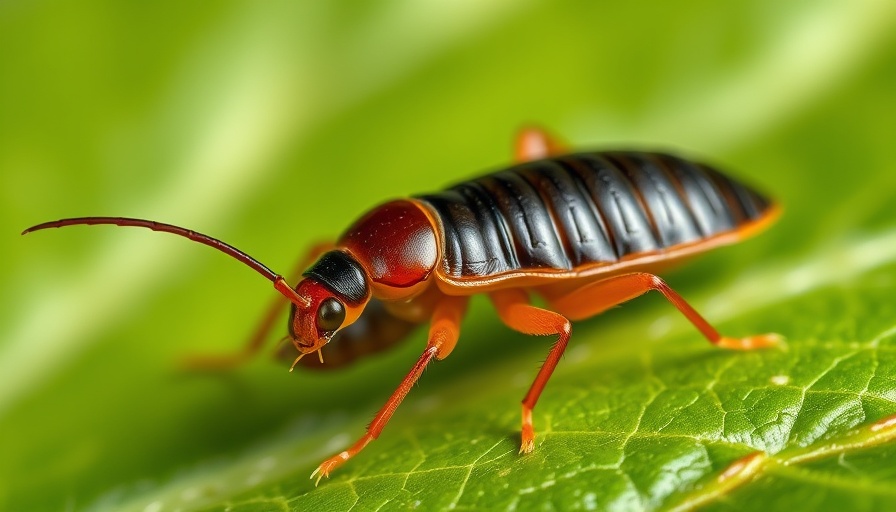
Creeping Concerns: Understanding Earwigs in Your Garden
For many gardeners, the sight of an earwig can conjure childhood fears, leading to a mix of disgust and curiosity. Commonly referred to as "pincher bugs," these peculiar insects have gained a reputation for being both beneficial and harmful to gardens. But what exactly are earwigs and why should we care about controlling them?
Identifying Earwigs: The Basics
Earwigs belong to the order Dermaptera, comprising around 2,000 species worldwide. In the United States, about 22 species are identifiable, with the common European earwig (Forficula auricularia) being the focal point for many home gardens. Recognizable by their dark reddish-brown bodies and tan legs, these insects feature short wings that give them a distinct appearance. Intriguingly, the term "earwig" derives from an old belief that these insects crawl into the ears of sleeping individuals—a myth that has long haunted our imaginations.
The Life and Behavior of Earwigs
Earwigs thrive in moist environments, often residing under stones, mulch, or decaying plant material in gardens. They are nocturnal creatures that can be omnivorous, feeding on decaying matter, but they can also cause damage by munching on seedlings, fruit, and various flowers, including dahlias and zinnias. Enthusiastic gardeners must learn to balance their beneficial roles, such as preying on harmful pest larvae, with their potential to wreak havoc on newly sprouted plants.
Navigating the Control Spectrum: Organic vs. Chemical Methods
Understanding how to control earwig populations in the garden starts with recognizing their life cycle and habitats. Organic methods tend to be most favorable among eco-conscious gardeners. Introducing beneficial insects, like parasitic wasps, and employing traps can effectively manage earwig numbers without relying on harsh chemicals. Alternatively, chemical pest control options are available but may pose risks to non-target species and the environment. Thus, exploring which method aligns with your gardening philosophy is crucial.
Gardening Tips for a Thriving, Earwig-Free Space
1. **Maintain Cleanliness:** Regularly clean up garden debris and fallen fruits that could attract earwigs. 2. **Moisture Control:** Ensure proper drainage to prevent overly moist conditions that favor earwig habitation. 3. **Use Traps:** Set up simple traps using rolled-up newspaper moistened overnight. Check them regularly and dispose of captured earwigs. 4. **Companion Planting:** Utilize companion planting strategies that deter earwigs by incorporating materials they dislike, like strong-smelling herbs.
For a Beautiful Garden, Knowledge is Key
By learning to identify and control earwigs, gardeners not only protect their beloved plants but also foster a healthier garden ecosystem. Becoming informed about these insects can turn a gardener’s fear into confidence. With appropriate strategies in place, you can ensure your flowerbeds remain vibrant and free from unwanted guests.
Creating Your Ideal Gardening Space
Crafting a peaceful and productive garden involves more than just managing pests; it requires a harmonious understanding of plant ecosystems. Implementing sustainable practices such as organic gardening, proper composting methods, and well-planned irrigation systems can create a flourishing outdoor experience. Explore different gardening projects, such as raised garden beds or vertical gardening solutions, to maximize your space while promoting a pollinator-friendly environment.
Take Action: Transform Your Garden Today!
Consider expanding your gardening knowledge! Utilize online resources or local gardening clubs to gain more insights into managing garden pests effectively and sustainably. Embrace the opportunity to connect with fellow gardening enthusiasts while enhancing your skills. Remember, every small step towards a healthier garden contributes to the larger ecosystem!
 Add Row
Add Row  Add
Add 




Write A Comment